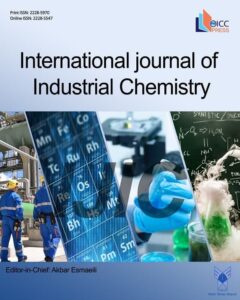Chrysanthemum indicum microparticles on removal of hazardous Congo red dye using response surface methodology
Authors
- J. Chukki 1
- S. Abinandan 2
-
S. Shanthakumar
*
 1
1
Abstract
Biomass-derived adsorbents have been intensively studied due to their competence in reducing pollutants with conventional methods. Flowers are used as source in medicine, cosmetics and even as adsorbents for pollutant abatement. In this study, the microparticles from Chrysanthemum indicum were used as adsorbent for reducing the Congo red dye concentration from synthetic solution. Batch trials were evaluated to understand the influence of factors and optimization was carried out using central composite design. Maximum reduction (84.1%) achieved under the optimized settings of pH (1.0), adsorbent dose (300 ppm), stirring speed (150 rpm), and contact time (75 min) at initial dye concentration (150 ppm at 30 °C). Microparticle size ensured with surface morphology of the adsorbent using electron microscopy and functional groups was studied using infrared spectroscopy techniques, respectively. Regression coefficient (R2) value was obtained as 0.956 which indicates that the predicted values were in good agreement with their corresponding experimental values for the Congo red dye adsorption. Based on the investigation, it is inferred that the Chrysanthemum indicum flower has the potential for Congo red dye reduction from aqueous solution.



